We have a long history in researching active transportation. Our studies have looked at bikeway infrastructure and signals to advance innovative design, and accessibility for bicyclists and pedestrians of all ages and abilities. We consider how cities and regions can better plan for and prioritize multi-modal transportation, particularly in historically underserved communities. NITC research has produced practical guidance for transportation professionals in cities across the country, and is being used to change national guidance such as the MUTCD and ITE Trip Generation manual. Download the full literature review of NITC research in walking and bicycling here, or you can download our two-page summary here.
In a series of NITC Research Roadmaps, we surveyed a decade of contributions across six areas of transportation research funded by the National Institute for Transportation and Communities (NITC).
Healthy and Sustainable Transportation
Our research has shown that walking and bicycling are essential building blocks of healthy communities, with several studies noting the impact of active transportation on personal well-being. One study demonstrated that people with active commutes have lower levels of cortisol (a stress-induced hormone) throughout the day, and two other survey-based studies found that people who walk or bike to work report being happier and finding more value in their daily travel. These findings can greatly increase the explanatory power of mode choice models, and help support policies promoting nonmotorized travel.
NITC research has also demonstrated that good walking and biking options improve access to destinations and reduce the amount of money they spend on transportation. Several studies have shown that supportive walking environments improved mobility, through accessibility features such as curb ramps, for seniors and people with disabilities.
Improved walking and biking access also benefit communities on a larger scale. One NITC study found that active transportation street improvements led to either positive or non-significant economic outcomes, through increased consumer spending, for local businesses. Others have shown that walking and biking can reduce vehicle miles traveled and lower emissions, improving air quality and helping to mitigate the effects of the climate crisis.
Designing Infrastructure and Facilities
NITC research provides a good roadmap for the types of facilities that are most likely to improve safety and encourage walking and bicycling. Several NITC studies have reinforced the idea that infrastructure physically separating cyclists from people driving motor vehicles is the most comfortable for both cyclists and drivers. After separated bike lanes were installed in five U.S. cities, bicycle ridership increased: 10% of riders had switched to biking from other modes, and 24% had switched to the separated bike lanes from other bicycle routes. Over a quarter of riders indicated they were riding more because of the new lanes.
Another study evaluated cyclists' comfort levels in various intersection designs, finding that designs that minimized the interaction of people bicycling and cars – such as fully separated signal phases and protected intersections – were rated as most comfortable by a majority of users.
Emerging Technologies
New technologies such as e-bikes, e-scooters, and bike share are expanding the possibilities of bicycle transportation. NITC researchers have led the way in understanding how people are currently and could potentially use e-bikes. A 2017 study found that people who had borrowed an e-bike for ten weeks tended to bike more, and viewed themselves as more confident bikers, by the end of the study. A national survey of e-bike owners found that e-bikes expand both the number of people who can ride a bicycle, and also the number, types and lengths of trips that they are able to make. Bike share, too, makes bicycling possible for more people. NITC researchers have partnered with foundations and local partners around the country to seek to better understand the potential for bike share, through transportation cost savings and ease of access, to bring improved mobility and recreation opportunities to people in low-income communities.
NITC research is also helping cities and agencies prepare for new mobility services. A 2019 report analyzed potential impacts of new technologies such as e-scooter and bike share systems, ride hailing, and autonomous vehicles to help jurisdictions prepare. Another project collected and developed model policies and codes to guide communities navigate the changing landscape, and a third outlined potential applications for bicycles in a connected vehicle context.
Centering Equity
Walking and bicycling can be the cornerstone of equitable transportation, providing low-cost transportation, physical activity and contributing to healthy communities. However, research has demonstrated that, in practice, efforts to improve these modes have not always served underrepresented racial/ethnic and low-income communities.
NITC research has shown that different groups, including lower-income and minority populations, may interact with the built environment in different ways, such as walking more in environments typically viewed as less walkable, often out of necessity. A study based on interviews with women and minorities in Portland found that for these people, barriers to bicycling include the ordinary concerns about infrastructure, and additional concerns about being vulnerable to harassment and/or violence while riding. A study of bike share in disadvantaged communities found that lower-income and minority residents face greater and more barriers to using the bike share systems, ranging from affordability, comfort bicycling, through to knowledge about how to use the systems or what programming exists to help them access the system. To help bike share providers address these needs, NITC researchers produced a national scan of equity programs from 70 bike share operators to document best program practices and evaluations.
Black, Indigenous and other People of Color (BIPOC) are fatally injured at a higher rate while walking than white people. NITC research has identified several contributing factors to this disparity, including harsher pedestrian conditions in neighborhoods with higher BIPOC populations. A further potential contributor may be related to driver yielding behavior. A 2014 study and its 2017 followup found that Black male pedestrians were passed by twice as many drivers and waited 32% longer than white male pedestrians.
Conclusion
The myriad benefits of active transportation, together with the many barriers that make it difficult for many people to travel by walking and bicycling, mean that research and practice must tackle challenges on multiple fronts. NITC research has provided engineering and design support, and offered guidance around budgeting, governance, equity practices, data management, policy and culture change. Such a multifaceted approach is necessary to build a healthy, sustainable transportation system, and NITC researchers over the past decade have made encouraging progress toward achieving this goal.
What are the impacts of our research on designing, implementing and activating safe, accessible active transportation options? Learn more about some impact stories below.
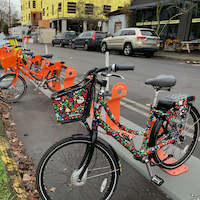 A series of studies supported by the Better Bike Share Partnership (BBSP) NITC has produced reports, articles and presentations that tell the story of who is using bike share, how to engage underserved communities, and what cities are doing to make bike share better serve those communities. Connecting with cities and bike share operators from across the United States, the research team also conducted a nationwide scan on what programs and initiatives were running to address equity across 70 bike share systems. This resource has helped cities and operators navigate the range of strategic actions that they can take now to increase equitable access to their systems, as well as how to measure and articulate the successes or challenges of their initiatives. Pulled from this study, NITC funded the development of ten technical briefs to help bike share systems learn from the experiences of others, innovate, and more quickly move toward greater equity.
A series of studies supported by the Better Bike Share Partnership (BBSP) NITC has produced reports, articles and presentations that tell the story of who is using bike share, how to engage underserved communities, and what cities are doing to make bike share better serve those communities. Connecting with cities and bike share operators from across the United States, the research team also conducted a nationwide scan on what programs and initiatives were running to address equity across 70 bike share systems. This resource has helped cities and operators navigate the range of strategic actions that they can take now to increase equitable access to their systems, as well as how to measure and articulate the successes or challenges of their initiatives. Pulled from this study, NITC funded the development of ten technical briefs to help bike share systems learn from the experiences of others, innovate, and more quickly move toward greater equity.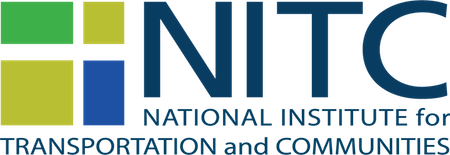
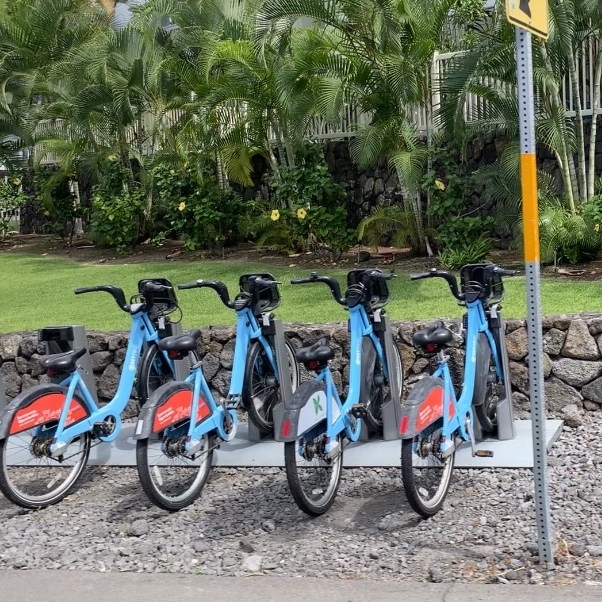 Shared micromobility services such as bikeshare and shared e-scooters are increasing across the U.S., with programs in nearly every state. This has expanded transportation options for some people, but there are still significant barriers for many communities. Some cities and transportation agencies are using new equity-based requirements, but they range widely by city and program These requirements generally fall within seven categories: reduced fares, multilingual services, cash payment compatibility, non-smartphone access, adaptive vehicles for users with disabilities, mandated geographic service areas, and targeted marketing and outreach. Program requirements are an important step towards operationalizing equity in shared micromobility, but our understanding of their impact is limited.
Shared micromobility services such as bikeshare and shared e-scooters are increasing across the U.S., with programs in nearly every state. This has expanded transportation options for some people, but there are still significant barriers for many communities. Some cities and transportation agencies are using new equity-based requirements, but they range widely by city and program These requirements generally fall within seven categories: reduced fares, multilingual services, cash payment compatibility, non-smartphone access, adaptive vehicles for users with disabilities, mandated geographic service areas, and targeted marketing and outreach. Program requirements are an important step towards operationalizing equity in shared micromobility, but our understanding of their impact is limited. 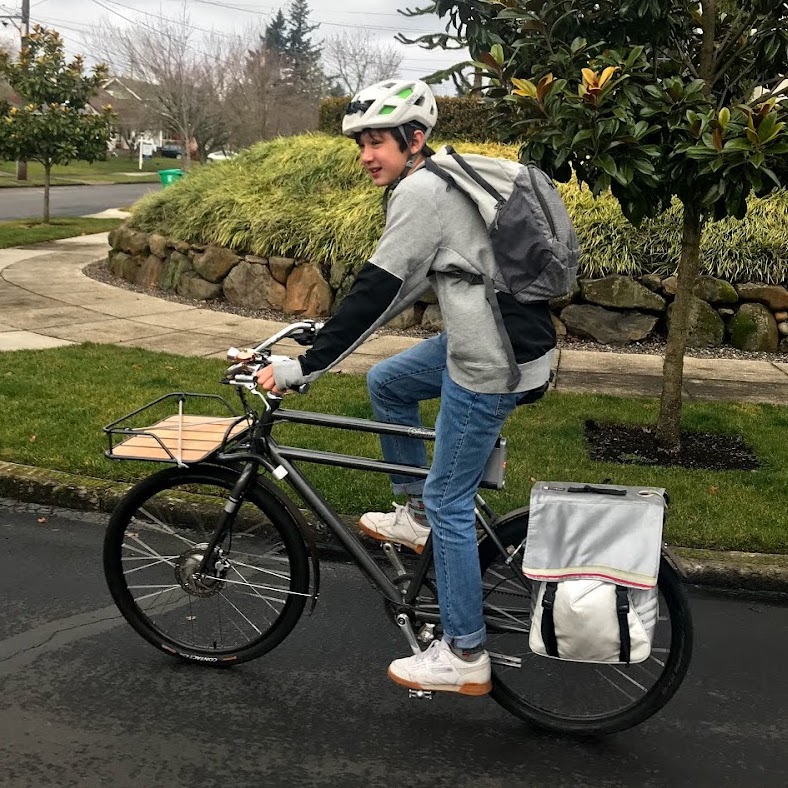 The
The 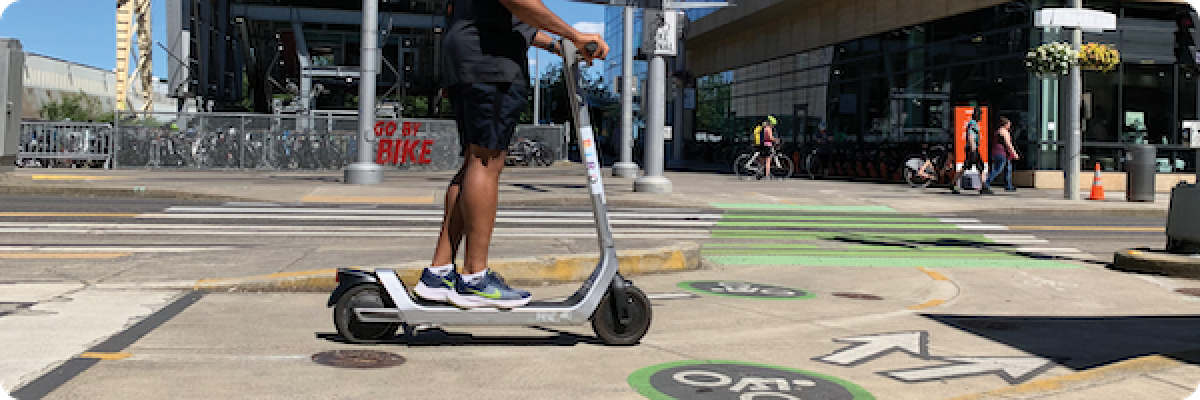
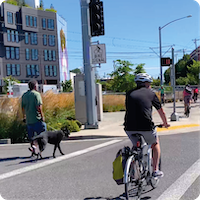 Placing new, robust bicycle infrastructure on major travel thoroughfares still garners intense political backlash in some cities, especially from local business owners who have concerns about revenue reduction because of the installation of new active transportation infrastructure with narrower travel lanes and removing parking.
Placing new, robust bicycle infrastructure on major travel thoroughfares still garners intense political backlash in some cities, especially from local business owners who have concerns about revenue reduction because of the installation of new active transportation infrastructure with narrower travel lanes and removing parking.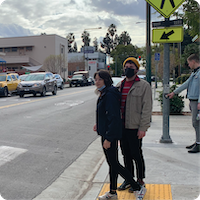 The
The  Funded in partnership with PeopleForBikes, this study was a comprehensive analysis of separated bicycle facilities in six U.S. cities: Chicago, Illinois; Washington, D.C.; Austin, Texas; Portland, Oregon; Memphis, Tennessee; and San Francisco, California. Video observation was used to evaluate safety and operations, and user surveys (of bicyclists, drivers and pedestrians) assessed attitudes, perceptions, preference, use, and understanding. The research team worked closely with practicing professionals in these cities as part of the project, including conducting site visits to all cities and meeting with city staff on multiple occasions.
Funded in partnership with PeopleForBikes, this study was a comprehensive analysis of separated bicycle facilities in six U.S. cities: Chicago, Illinois; Washington, D.C.; Austin, Texas; Portland, Oregon; Memphis, Tennessee; and San Francisco, California. Video observation was used to evaluate safety and operations, and user surveys (of bicyclists, drivers and pedestrians) assessed attitudes, perceptions, preference, use, and understanding. The research team worked closely with practicing professionals in these cities as part of the project, including conducting site visits to all cities and meeting with city staff on multiple occasions. This two-part study was among the first to show racial bias in pedestrian’s experience crossing streets, and explored social identity-related factors that influence drivers’ behaviors in interactions with pedestrians at crosswalks. If drivers yield differently to Black and white pedestrians at crosswalks, this may lead to disparate crossing experiences and disproportionate safety outcomes. The research team conducted a field experiment where Black and white pedestrians wore identical clothing and repeatedly crossed the same intersection in a systematic manner, with coders in the field marking drivers’ behaviors. The
This two-part study was among the first to show racial bias in pedestrian’s experience crossing streets, and explored social identity-related factors that influence drivers’ behaviors in interactions with pedestrians at crosswalks. If drivers yield differently to Black and white pedestrians at crosswalks, this may lead to disparate crossing experiences and disproportionate safety outcomes. The research team conducted a field experiment where Black and white pedestrians wore identical clothing and repeatedly crossed the same intersection in a systematic manner, with coders in the field marking drivers’ behaviors. The 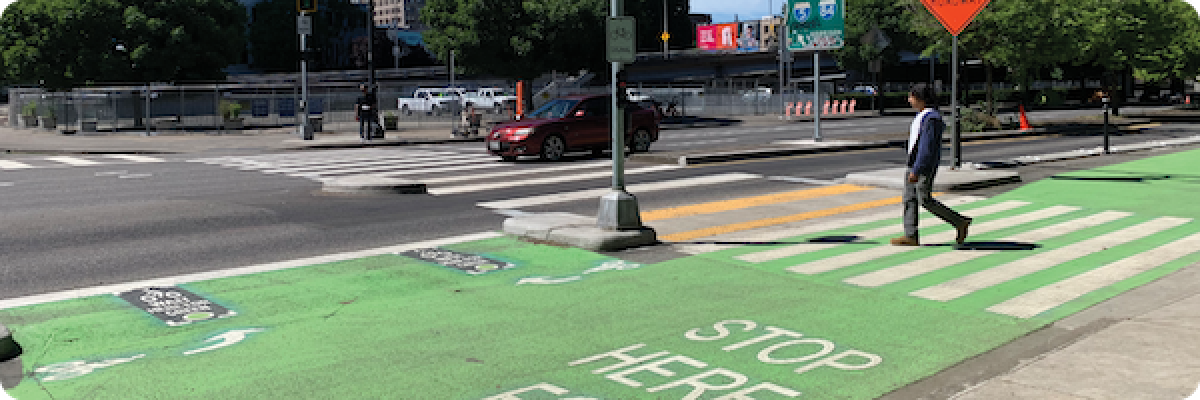
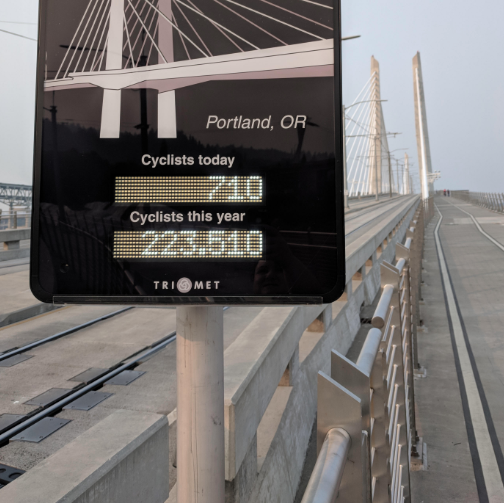 In order to make sure bicyclists' needs are considered when improving a transportation system, planners and engineers need to know how many people are biking, and where. Traditional bicycle counters can provide data for limited sections of the bike network, often these counters are installed at important locations like trails or bridges. While limited in location, they count everyone who bikes by. Meanwhile, GPS & mobile data cover the entire transportation network, but that data only represents those travelers who are using smartphones or GPS. Combining the traditional location-based data sources with this new, crowdsourced data could offer better accuracy than any could provide alone.
In order to make sure bicyclists' needs are considered when improving a transportation system, planners and engineers need to know how many people are biking, and where. Traditional bicycle counters can provide data for limited sections of the bike network, often these counters are installed at important locations like trails or bridges. While limited in location, they count everyone who bikes by. Meanwhile, GPS & mobile data cover the entire transportation network, but that data only represents those travelers who are using smartphones or GPS. Combining the traditional location-based data sources with this new, crowdsourced data could offer better accuracy than any could provide alone.

